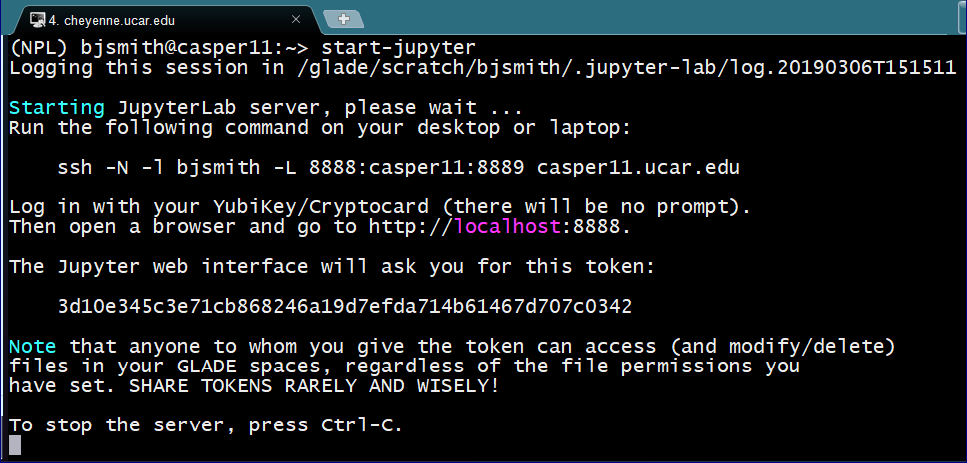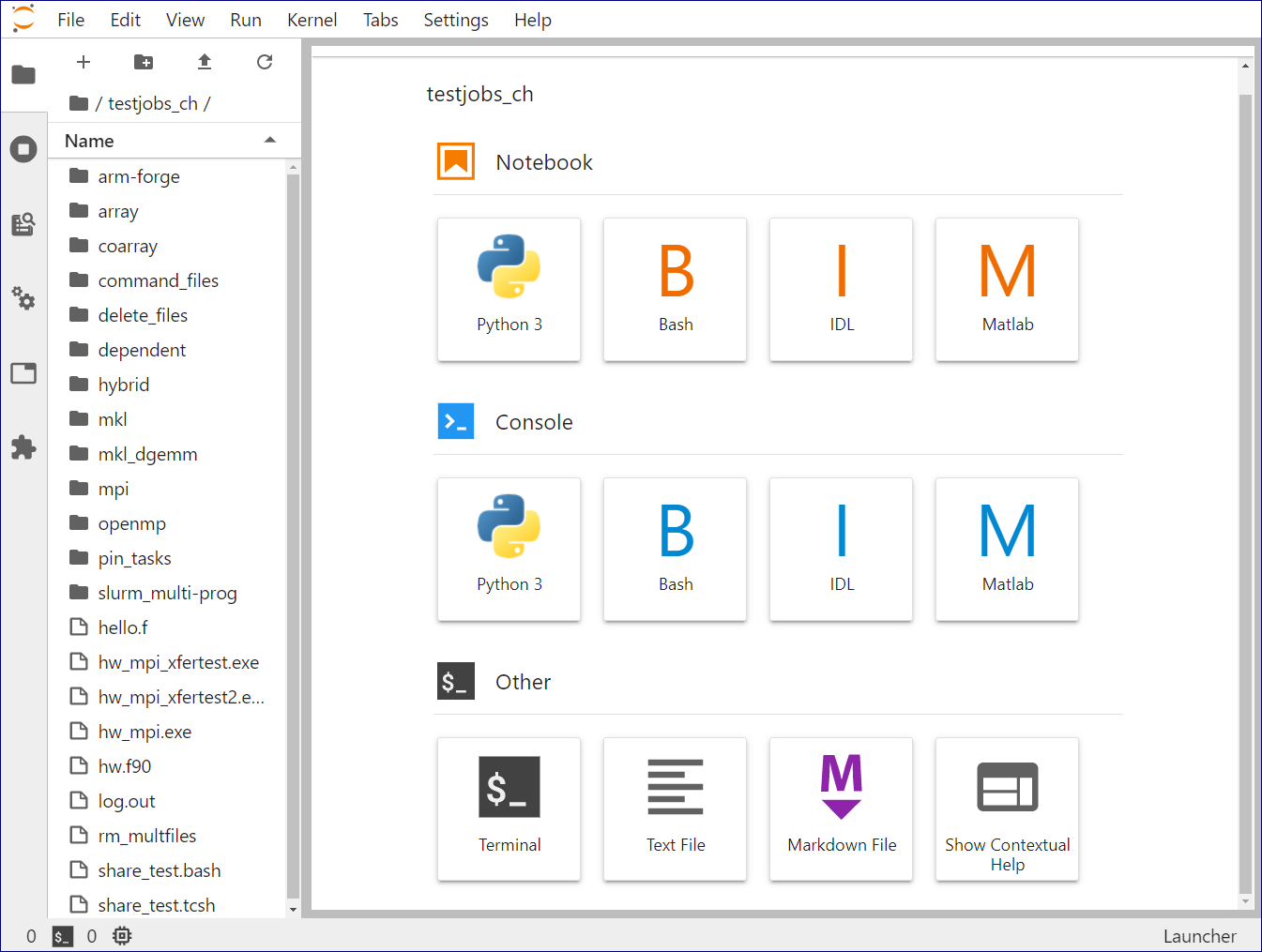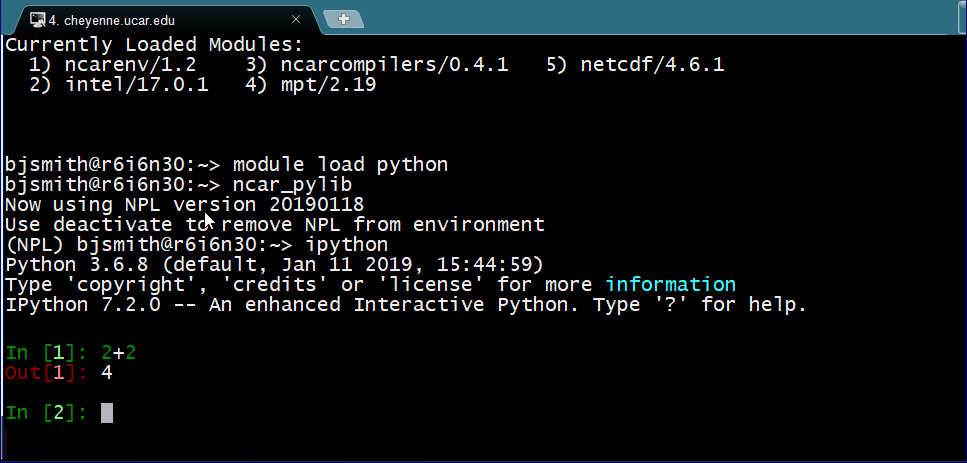The Jupyter package is designed to facilitate interactive computing, especially for code editing, mathematical expressions, plots, code/data visualization, and parallel computing. The IPython kernel is included in the package. Jupyter supports many alternative kernels, also known as language interpreters. See details below.
The instructions below describe how to start the browser-based JupyterLab, the IPython shell, and Jupyter QtConsole on the Cheyenne system and the Casper data analysis and visualization nodes.
For additional information, see JupyterHub at NCAR and the Jupyter documentation.
Page contents
Starting JupyterLab
Start an interactive job using the qinteractive command. (Alternative: Start the job on Casper using execcasper if it requires GPUs or more memory than is available on Cheyenne.)
- Load the ncarenv and python modules.
- Run the ncar_pylib command to load the NCAR Python Library virtual environment.
- Run the start-jupyter command. (The older Notebook interface is still available using the start-notebook command.)
The output includes instructions like those shown in the image just below. Including the -N after the ssh command establishes the tunneling that allows you to use JupyterLab in your local browser. It also prevents you from actually opening a second ssh session. If you prefer to have a second session open, omit the -N. When you close that session, you will be closing your browser connection to JupyterLab.
On your local computer, run the ssh command as instructed.
The session will appear to hang after you log in. At that point, start http://localhost:nnnn in your browser. (The port numbers may be different from those in the output example above.)
JupyterLab will request a password or "token," which is a long string as shown in the output above that you can copy and paste from your terminal.
Your browser will open the JupyterLab web interface after you log in with the token.
Related links
Notebook: Extract NECOFS water levels using NetCDF4-Python and analyze/visualize with Pandas
Notebook: Access data from the NECOFS (New England Coastal Ocean Forecast System) via OPeNDAP
Starting IPython shell
- Start an interactive job using the qinteractive command. (Alternative: Start the job on Casper using execcasper if it requires GPUs or more memory than is available on Cheyenne.)
- Load the ncarenv and python modules.
- Run the ncar_pylib command to load the NCAR Python Library virtual environment.
- Run the ipython command to start the shell.
Starting Jupyter QtConsole
Log in with X tunneling (using the ssh -X option).
Start an interactive job using the qinteractive command. (Alternative: Start the job on Casper using execcasper if it requires GPUs or more memory than is available on Cheyenne.)
- Load the ncarenv and python modules.
- Run the ncar_pylib command to load the NCAR Python Library virtual environment.
- Run the jupyter qtconsole command to start the console.
Using alternative language kernels
Jupyter supports multiple language interpreters (known as "kernels"). The Python interpreter is loaded by default as the language kernel when using Jupyter, but you can specify use of another kernel when invoking a particular command. To see a list of installed language kernels, run this command:
jupyter kernelspec list
To use a kernel, specify it by name when invoking a command. For example, to use the R 3.4.0 interpreter on Cheyenne in the Jupyter QtConsole, enter the following:
jupyter qtconsole --kernel=r-3.4
The console will load with the R command line interpreter active.
If you need a language kernel that has not been installed, you can install it yourself in your local directory or contact the NCAR Research Computing help desk to have it added in the system library.




